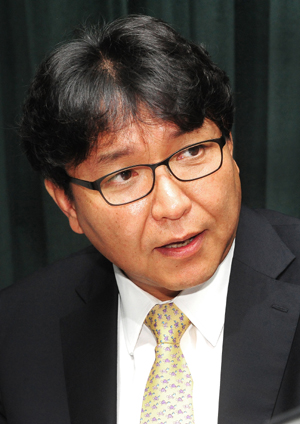Dr. Song's medbiz column
A local brokerage house issued a report named “Bio bubbles in small-medium capitalization stock market severely damage market integrity” Wednesday. On Thursday, the share prices of biotech stocks nosedived. Not a single biotech stock among the top 100 regarding market capitalization was free from the shocks of the report.
The report, which pointed out bubbles in bio-business, was correct in some ways. As the CEO of a bio-venture developing new drug, however, this writer felt somewhat bitter. The reason; as I see it, the structural problems that inevitably lead to some bubbles appear hard to be resolved.

When I first joined the company, I was naïve enough to believe that if a stock price rises its profit will flow into the company. Except for a few cases, however, there are no immediate benefits to companies when their stock price soar.
If a company issued convertible bonds and its stock price rises above the issue price, its investors would choose to convert the CB into stocks rather than getting principal redemptions. In this case, the liabilities of the company will turn into its capital and reduce its deficit on the balance sheet. Also, if a company takes out a loan by putting up stocks as collateral, a drop in the stock price below the specified level may lead to a loss as it can cause the sell-off of the collateralized stocks.
A business enterprise is an organization which produces profits through a unique set of activities. A company issues stocks to raise operating funds and create profits, but short-term investors in capital markets want to benefit by trading these stocks.
The biotech industry field is vast. It ranges from the development and sales of drugs to treat diseases, technologies, equipment, health functional foods, cosmetics and to the IT technology related to healthcare, all of which are classified as the bio. It is almost impossible for the public to verify the future value of such technologies as a high level of expertise is required, and there is no way to verify the authenticity of varied information reported in the media.
If so, what should be the basis for ordinary investors to decide whether to invest? It is essential whether articles published in SCI-listed international journals confirm the positive effects of drugs or technologies. These papers can be found through just researching Google as well as in a website called PubMed. It usually takes a few months or six months at most for these articles to be published.
The research results are usually presented at academic conferences before appearing. Investors might as well regard oral or poster presentation at the meetings as preliminary rounds, and the publication in the journal as main competitions.
A clinical trial is a final gateway in the field of drug development, and the success at each phase depends on the technologies or abilities of companies. In Korea, it is illegal to mention efficacy of drugs under clinical trials, and therefore it is common for the company to promote them through a presentation at academic conferences and journals.
A decision on investment should be carefully made since it is challenging to confirm information on clinical trials conducted overseas provided by the media. Nor are there any laws to regulate them so far.
Lastly, a licensing out of technologies to global pharmaceutical companies -- called technology transfer -- surely works as the basis for recognizing its future value.
Eventually, the ability of a bio-venture should be judged with the research articles published. This is because the stock price is likely to being soaring already when it issues a press release on the success of clinical trial or execution of a license out a deal. In such cases, it is difficult to expect short-term investment gains.
It is imperative to distinguish between good and lousy bio-businesses for a long-term, stable investment. This should be done through objective and scientific valuation, not based on the rumors or media reports which cannot be confirmed. And in this way, bio industry can also develop through raising sound capital.

